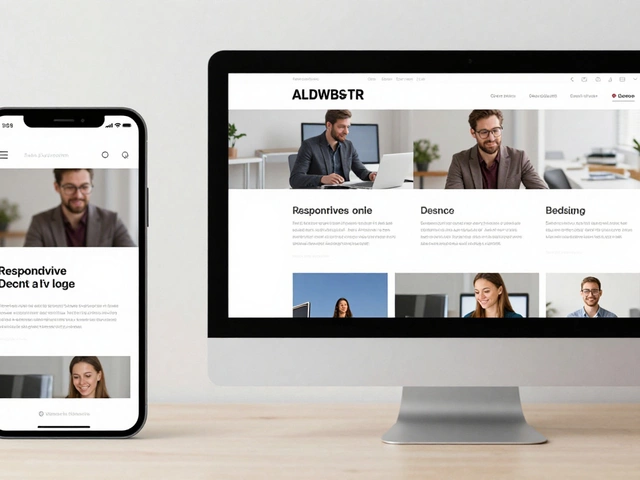Thinking of starting your own ecommerce venture? You'll need to get a handle on the financial side of things first. Before you fill your virtual shelves, you gotta understand what this is gonna cost you. It's not just about buying a domain; there's much more at stake.
Here's the scoop: Setting up shop online isn't as simple as clicking a few buttons. Sure, you've got platforms like Shopify or WooCommerce that make things easier, but what about the hidden expenses? From web development to inventory storage, let's break down the financial puzzle of launching an ecommerce site.
- Initial Setup Costs
- Online Platform Fees
- Marketing Budget
- Logistics and Operations
- Tips to Save Money
Initial Setup Costs
So, you're ready to jumpstart your ecommerce journey, but what's it really gonna cost you upfront? Let’s break down some key expenses you'll face during your initial setup.
1. Domain and Hosting
First up, you need a domain name. It's your online address, and it usually runs around £10 to £15 per year. Next, you've got hosting costs. Depending on your provider, expect to dish out anywhere from £5 to £30 a month.
2. Website Design and Development
Building your site is where chunks of your budget might go. Using templates on platforms like Shopify can keep costs low, around £29 per month. But if you’re aiming for a fully customized site, a developer can charge between £500 and £5,000. It sounds steep, but the professional touch often pays off in customer retention.
3. E-commerce Platform Fees
Many online platforms offer tiered pricing. For instance, Shopify's basic plan starts at £29, but there are higher tiers offering more features. Always align the plan's features with your business needs. You don't want to pay for what you won’t use!
4. Inventory and Supply Costs
If you're selling physical products, initial inventory costs are a must-consider. Calculate how much you'll spend stocking your products. A smart approach? Start small and scale as demand grows.
"The cost to start an online store largely depends on the complexity of the site and product range," says Jane Doe, a digital marketing expert at EcomWiz.
5. Legal and Administrative Fees
Skipping legal fees can be tempting, but it's a risky move. Licenses, permits, and insurance keep you legit. Costs vary, so check what's required for your industry.
- Licenses: Up to £100
- Permits: Depend on area and industry
- Insurance: Averages £500 a year
All things considered, kicking off your ecommerce store is a balance of spending wisely and ensuring you're ready to roll. Think strategic in planning your startup costs and you'll set a solid foundation for your business growth.
Online Platform Fees
So, you’re gearing up to open your online store? One of your first big choices is which ecommerce platform to use. Platforms are like the digital real estate of your store, and they come with their own fees that can affect your bottom line.
Here's a quick rundown: platforms like Shopify, WooCommerce, and BigCommerce are popular choices. Each has its own pricing model, so let’s break it down:
- Shopify: This platform usually charges a monthly fee starting from £24 for the basic plan. It also has transaction fees unless you use Shopify Payments, which can save you a few quid.
- WooCommerce: It's technically a free plugin for WordPress, but don’t get too excited. You’ll still shell out for hosting, a domain, and maybe some premium plugins if you want more functionality.
- BigCommerce: They’ve got plans starting around £29 monthly. Like Shopify, they don’t hit you with transaction fees on top of that.
How to Choose the Right One?
Think about what you need. If you’re just starting out, maybe a basic plan is all you need for now. But if you’ve got grand plans for heavy traffic and loads of products, go for something more robust.
Some Hidden Costs
A word of advice—keep an eye on additional charges like payment processing or premium features that aren't included in the base cost. You might need extra themes or plugins to make your site pop, which often come at a price.
Some folks find a free platform tempting, but usually, the flexibility and features of a paid platform make life a whole lot easier very quickly.

Marketing Budget
Alright, time to talk about the marketing budget. It's one of those things that can sneak up on you if you're not prepared. Getting the word out about your online store takes both strategy and money. So, let's make sure you spend your budget wisely.
Understanding Your Marketing Costs
First off, what goes into this budget? It's not just about ads. Think about email marketing, influencer collaborations, search engine optimization (SEO), and maybe even traditional advertising like print or radio. Each of these options has different costs attached, and not all of them may work for your specific business.
Digital Advertising Expenses
Platforms like Google Ads or Facebook Ads can give you a lot of bang for your buck, if you know how to work them. Generally, you'll need to set aside around 10-20% of your total revenue for digital marketing, which could range from hundreds to thousands of pounds depending on your business scale.
Ecommerce startup stats suggest businesses spend an average of 7-12% of their revenue on marketing. Here's where it gets crucial: track what you’re spending and adjust as needed. Which channel gives you the best return on investment (ROI)? Focus there.
Content and SEO
Another cost to keep in mind is content. You might need to hire people to create blog posts, graphics, or videos. Good content not only attracts visitors but also keeps them coming back. And then there's SEO. Optimizing content for search engines could be a cost-effective strategy that pays off over time.
Free or Low-Cost Strategies
Don't overlook the power of free tools. Social media platforms are a goldmine if used right. Organic posts, engaging content, and community interaction can do wonders without draining your budget.
Building a robust email list doesn't have to cost much, either. Tools like Mailchimp offer free plans to start with, allowing you to reap the benefits of a more direct line to your customers.
- Leverage social media platforms effectively.
- Invest in a basic SEO strategy from the beginning.
- Experiment with influencer marketing on a small scale.
Tracking and Tweaking
Keep an eye on your ecommerce investment and how it's playing out in your marketing efforts. Use analytics tools to track conversions and adjust accordingly. The more data you have, the more you can fine-tune where that budget should go.
To wrap it up, your online store budget might start small, but with strategic planning and consistent tweaks, it can lead to significant growth. Always remember, spending without strategy is just guessing.
Logistics and Operations
When it comes to ecommerce, logistics and operations play a massive role in your success. It’s not just about having a great product; it’s about getting it to your customers without a hitch. Let's talk about what's involved.
Inventory Management
First thing's first: how do you handle your stock? Whether you're selling artisanal cheese or tech gadgets, tracking inventory is crucial. Consider using software that helps manage stock levels, reorder goods automatically, and track sales. This may seem like a minor detail, but it can save a ton of headaches down the line.
Shipping
Next up is shipping. How quickly can you get your products to customers? A major chunk of your ecommerce cost goes into logistics. Partnering with reliable couriers like Royal Mail or UPS is key, but don’t forget to factor in international shipping if you're looking to go global.
Warehouse Needs
Another essential is warehouse management. Do you need your own space or should you opt for third-party solutions like Amazon FBA? Each option comes with its own pros and cons. Renting a space gives you more control, while a third-party provider might offer expertise and efficiency, albeit at a cost.
Handling Returns
Let’s not forget about returns. They’re inevitable. Streamlining your return process isn’t just about making life easier for your customers; it directly impacts your bottom line. Clear guidelines and a hassle-free process can even turn a returning customer into a loyal one.
Logistics might sound daunting, but nailing it means fewer unhappy customers and a well-oiled operation. Happy customers can lead to higher sales, making every penny you spend on this part of your business totally worth it.

Tips to Save Money
Looking to start your ecommerce journey without emptying your wallet? Here are some practical ways to cut costs and stretch your budget effectively.
Choose the Right Platform
Not every online store needs a premium Shopify plan. Compare platforms like WooCommerce and Shopify, and pick one that matches your needs. Remember, fancy features sound cool but might be overkill for beginners.
DIY Design
If you're on a tight ecommerce startup budget, consider doing your own website design. Platforms offer a bunch of free templates, and with a little time, you can customize them to make your brand shine.
Smart Inventory Management
Don't overstock! Start with a small inventory to reduce initial expenses. Assess demand and scale up as needed. This helps avoid tying up cash in unsold products.
Marketing on a Budget
Online ads can be expensive, but there are ways to get noticed without big bucks. Use social media for organic reach, collaborate with influencers, or harness the power of email marketing. This keeps your marketing budget in check.
Bulk Purchasing & Dropshipping
Buying in bulk can provide discounts, but don't overdo it. Alternatively, dropshipping can remove the need for upfront inventory investment. This can significantly lower operational costs, especially when logistics and operations are concerned.
| Platform | Monthly Cost |
|---|---|
| Shopify Basic | £29 |
| WooCommerce (Hosting Required) | £15 - £30 |
Understanding these costs and strategies can make running an online store more affordable and potentially more profitable in the long run. Be savvy with your spending and always look for ways to minimize costs while maximizing value.





